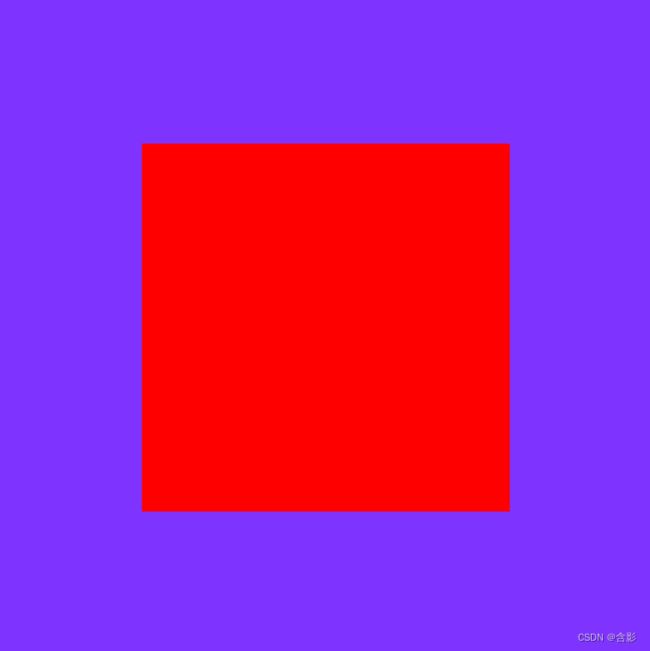Google codelab WebGPU入门教程源码<2> - 绘制几何形状(源码)
对应的教程文章: https://codelabs.developers.google.com/your-first-webgpu-app?hl=zh-cn#3
源码执行效果:
对应的教程源码:
此处源码和教程本身提供的部分代码可能存在一点差异。
class Color4 {
r: number;
g: number;
b: number;
a: number;
constructor(pr = 1.0, pg = 1.0, pb = 1.0, pa = 1.0) {
this.r = pr;
this.g = pg;
this.b = pb;
this.a = pa;
}
}
export class WGPURRectShape {
private mRVertices: Float32Array = null;
private mRPipeline: any | null = null;
private mVtxBuffer: any | null = null;
private mCanvasFormat: any | null = null;
private mWGPUDevice: any | null = null;
private mWGPUContext: any | null = null;
constructor() {}
initialize(): void {
console.log("WGPURRectShape::initialize() ...");
// const canvas = document.querySelector("canvas");
const canvas = document.createElement("canvas");
canvas.width = 512;
canvas.height = 512;
document.body.appendChild(canvas);
console.log("ready init webgpu ...");
this.initWebGPU(canvas).then(() => {
console.log("webgpu initialization finish ...");
this.clearWGPUCanvas();
});
document.onmousedown = (evt):void => {
this.clearWGPUCanvas( new Color4( Math.random(), Math.random(), Math.random()) );
}
}
private createRectGeometryData(device: any, pass: any): void {
let vertices = this.mRVertices;
let vertexBuffer = this.mVtxBuffer;
let cellPipeline = this.mRPipeline;
if(!cellPipeline) {
vertices = new Float32Array([
// X, Y,
-0.8, -0.8, // Triangle 1 (Blue)
0.8, -0.8,
0.8, 0.8,
-0.8, -0.8, // Triangle 2 (Red)
0.8, 0.8,
-0.8, 0.8,
]);
vertexBuffer = device.createBuffer({
label: "Cell vertices",
size: vertices.byteLength,
usage: GPUBufferUsage.VERTEX | GPUBufferUsage.COPY_DST,
});
device.queue.writeBuffer(vertexBuffer, /*bufferOffset=*/0, vertices);
const vertexBufferLayout = {
arrayStride: 8,
attributes: [{
format: "float32x2",
offset: 0,
shaderLocation: 0, // Position, see vertex shader
}],
};
const shaderCodes = `
@vertex
fn vertexMain(@location(0) pos: vec2f) ->
@builtin(position) vec4f {
return vec4f(pos * 0.7, 0, 1);
}
@fragment
fn fragmentMain() -> @location(0) vec4f {
return vec4f(1, 0, 0, 1);
}
`;
const cellShaderModule = device.createShaderModule({
label: "Cell shader",
code: shaderCodes
});
cellPipeline = device.createRenderPipeline({
label: "Cell pipeline",
layout: "auto",
vertex: {
module: cellShaderModule,
entryPoint: "vertexMain",
buffers: [vertexBufferLayout]
},
fragment: {
module: cellShaderModule,
entryPoint: "fragmentMain",
targets: [{
format: this.mCanvasFormat
}]
},
});
this.mRVertices = vertices;
this.mVtxBuffer = vertexBuffer;
this.mRPipeline = cellPipeline;
}
pass.setPipeline(cellPipeline);
pass.setVertexBuffer(0, vertexBuffer);
pass.draw(vertices.length / 2);
}
private clearWGPUCanvas(clearColor: Color4 = null): void {
clearColor = clearColor ? clearColor : new Color4(0.5, 0.2, 1.0);
const device = this.mWGPUDevice;
const context = this.mWGPUContext;
const rpassParam = {
colorAttachments: [
{
clearValue: clearColor,
// clearValue: [0.3,0.7,0.5,1.0], // yes
view: context.getCurrentTexture().createView(),
loadOp: "clear",
storeOp: "store"
}
]
};
const encoder = device.createCommandEncoder();
const pass = encoder.beginRenderPass( rpassParam );
this.createRectGeometryData(device, pass);
pass.end();
const commandBuffer = encoder.finish();
device.queue.submit([commandBuffer]);
}
private async initWebGPU(canvas: HTMLCanvasElement) {
const gpu = (navigator as any).gpu;
if (gpu) {
console.log("WebGPU supported on this browser.");
const adapter = await gpu.requestAdapter();
if (adapter) {
console.log("Appropriate GPUAdapter found.");
const device = await adapter.requestDevice();
if (device) {
this.mWGPUDevice = device;
console.log("Appropriate GPUDevice found.");
const context = canvas.getContext("webgpu") as any;
const canvasFormat = gpu.getPreferredCanvasFormat();
this.mWGPUContext = context;
this.mCanvasFormat = canvasFormat;
console.log("canvasFormat: ", canvasFormat);
context.configure({
device: device,
format: canvasFormat,
alphaMode: "premultiplied"
});
} else {
throw new Error("No appropriate GPUDevice found.");
}
} else {
throw new Error("No appropriate GPUAdapter found.");
}
} else {
throw new Error("WebGPU not supported on this browser.");
}
}
run(): void {}
}